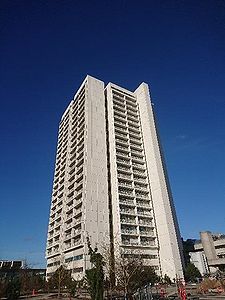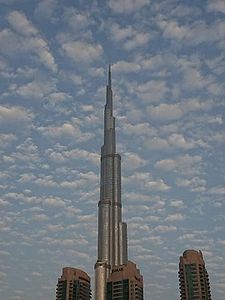Communication and Media Richness Assurance in High-performance Projects
In Communication, the term media richness (or information richness) refers to the amount of information a medium is capable of transmitting per given time unit.
Contents |
Abstract
With a plethora of available communication tools and often high degrees of freedom in their timing, choosing the right tool at the right time is non-trivial. Depending on the choice of tools and timing, results will vary from excellent through acceptable to undesired. However, as no universally successful recipe exists for ensuring positive outcomes, having a good understanding of the various communication options and their attributes will increase chances of making rational decisions accumulated and translating in turn into complex, fit-for-purpose solutions.
This article seeks to help project practitioners gain awareness of different communication tools and timing from a multi-disciplinary perspective. Disciplines covered are human nature, psychology, mathematics, linguistics and culture, with use of case studies and best practice. The diverse angles on the topic come together to bring a unified, in-depth understanding of media richness assurance aiding practitioners to achieve better results in their practical application in project implementations.
A key concept discussed in the article is Media Richness Theory (MRT), or Information Richness Theory. MRT describes how various communication media, such as face-to-face interaction and email correspondence, have different characteristics in terms of their information capacity and transfer rate, notable advantages and disadvantages and situation-based use cases.
Based on MRT, three case studies will be discussed to analyse chosen tools and methods in relation to project outcomes. Conclusions from the case studies will guide the final article recommendations.
Introduction
Organisations rely on communication to successfully complete tasks (typically organised in projects) and fulfil purposes. Since success is typically measured on a linear scale, any overall project success could be considered the sum of a series of intermediary successes. Project purpose fulfilment thus quite simply relies on good stakeholder communication on a continuous basis throughout the entire project lifecycle.
What separates standard projects from high-performing projects is that in the latter communication effectiveness becomes vital not only regarding accuracy but also for speed. In other words, communication needs to happen both precisely and quickly, allowing superb utilisation of project resources to create outstanding project results.
Given the critical role of communication in high-performance projects, the question is ‘how does one go about designing and executing this complex project system of communication?’. As Daft and Lengel universally put it, "How do organizations perform this miracle?" [1]
Human Nature
To truly understand later developments and higher-abstraction processes and terminology, one must journey back to the basics at the source and core meanings of the topic: Human beings are born with five senses: sight, hearing, touch, smell and taste. These senses are designed not only for survival (securing life necessities) but also to enable us to communicate with our surroundings to yield better results in numerous respects. In essence, our choice of senses can be considered a toolbox that we make use of in various ways in order to carry out tasks and fulfil purposes. The way in which we relate to and make use of this toolbox sees us entering the domain of psychology: from a number of available options we make a given decision that employs one or more senses and then subsequently take appropriate action. These thought processes started out in history among primates as survival-prioritised ('there is food straight ahead, so I will move in that direction in order to get and eat it'), but have through time evolved substantially to highly complex, human decision-making patterns ('there is food straight ahead, but information tells me there is better food a little further on, so I will go there instead to eat). As evident in both scenarios, human biology is coupled with psychology through decision-making. In the latter, however, richer communication is present resulting in greater overall benefit.
Organisational Psychology
Organisations formed by coalitions of human beings have existed for several thousand years, yielding tremendous benefits on a grand scale. For example, the ancient Greek and Romans erected monumental structures [2] which would have never been possible without cooperation through communication.

As with individual human psychological evolution, the psychology employed in traditional organisations evolved over time into a higher-complexity field as seen in modern organisations. Evolution in technology, human and material resources, infrastructure and health collectively caused an explosion in size and resolution of the overall decision-making landscape. There are now many times more key decision-makers in each organisation and an astronomical amount of organisation-level decisions made daily across the global business community.
The refined effect of this on psychological factors is that decision-makers have access to an overwhelming amount of information and communication options yet continue to have the same mere five basic human senses. A way that modern organisations deal with this severely infavourable interface misalignment is to employ processes, policies and communication protocols to continually aid decision-making mechanisms.
This places emphasis on organisation stakeholders to learn and appropriately interact with the organisational framework, but in return offers reduced levels of uncertainty achieved through somewhat guided focus.
As Jacobsen and Thorsvik put it, "organisations are selective in their search for information and shield themselves against different types of information".[4]
Information Media
In today's digital world an endless array of communication media exists for people to utilise. This immediately poses a threat to both efficiency and effectiveness, since communication is a continuous process and people therefore potentially could invest huge amounts of resources in communication with only an acceptable (or even little) amount of gain. Complimentarily, if communication media are used appropriately this vast selection of tools some of which could be considered extremely powerful could mean historically unprecedented opportunities for achieving world-leading project results.
The list below comprises some key communication media, categorised broadly based on their information/data transfer capabilities (quality of the data stream, categorised by fidelity[5] and measured in bits per second; bps).
| Fidelity | Medium | Timing | Transfer rate (typical) - primary data | Transfer rate (typical) - secondary data | Primary data type | Secondary data type(s) | Maximum senses engaged | Conversation party size (typical) |
|---|---|---|---|---|---|---|---|---|
| High | Face-to-face conversation | Synchronous | 9,216,000,000[6] | 99,500,000,000+[7](limited to 1080p quality) | Audio | Video | 5 | 2-4 |
| Video conferencing | Synchronous | 128,000[8] | 1,977,000[9] | Audio | Video | 2 | 4-15 | |
| Medium | Telephone calling | Synchronous | 12,200[10] (3G connection) | - | Audio | - | 1 | 2 |
| Audio conferencing | Synchronous | 128,000[8] | - | Audio | - | 1 | 4-15[11] | |
| Internet messaging/chat | Asynchronous | 1[12] (based on 4 characters typed per second) | 500,000[13] (min. recommended rate for most demanding medium: video) | Text | Mixed media | 2 | 2-4 | |
| Email correspondence | Asynchronous | 1[12] (based on 4 characters typed per second) | 500,000[13] (min. recommended rate for most demanding medium: video) | Text | Mixed media | 2 | 2-5 | |
| Low | Multimedia messaging (MMS) | Asynchronous | 1[12] (based on 4 characters typed per second) | 12,200[10] (3G connection) | Text | Mixed media | 2 | 2 |
| Text messaging (SMS) | Asynchronous | 1[12] (based on 4 characters typed per second) | - | Text | - | 1 | 2 |
Data Flow
As seen in the table, the 8 different communication media vary greatly in their characteristics. By looking at the various data transfer rates, it appears that certain communication media provide significantly more information per time unit than others (in this article classed as media 'richness'). Adding to the mix the limits for senses engaged, which indicate the resources at the communication recipient's availability, an overall conceptual picture starts to form about data flow:
1. There are vastly differing caps for different communication media on how much information is transmittable
2. Dependent on chosen media type, there is great disparity in employable reception points (senses engaged) to which information is receivable.
Worth noting about the above quantitative data analysis is that it is solely concerned with mathematics and the numerical aspect of data streams. Left out entirely of this picture are the sociological and design/implementation aspects of communication. Other resource theories/models go in depth with these areas, such as the 34 different hypotheses found in Deutsch's research paper on cooperation and competition[14] and the cost-versus-efficiency model for determining the best group size in Casari and Tagliapietra's article Group Size in Social-ecological Systems[15].
Data Quality
Whereas data flow tells us how much information is mathematically possible to send/receive, data quality relates to the clarity of the transmitted message. This aspect is vital in truly understanding the advantages and pitfalls of various information media. A key measurable for assessing quality is Signal-to-noise ratio.
Looking into the meaning of the numeric transfer rates in the table data, each figure (denoting a pool of information) can be considered to contain two sub-components: signal and noise. The signal is what carries the key message from a communication sender to a communication recipient, whereas the noise covers any other signal that is considered irrelevant to the given conversation/communication transaction. This concept is applicable to both audio and visual media components.
Assuming that both signal and noise account for a low minimum of 10% of the data transfer rate for each medium, the larger data rates immediately transpire to have significantly more resolution in terms of both signal and noise information. Appropriate filtering in terms of blocking out noise would then allow a richer signal to be perceived. Luckily, both our highly-efficient visual and audio perception coupled with advanced brain processing allows just this. For audio, "auditory perception encompasses a sequence of feature extraction steps, with increasingly complex acoustic features extracted at each stage of neural processing"[16]
The bottom-line result of increased available information and our biologically highly effective signal/noise processing is that richer media allow for a much cleaner communication output in terms of delivery of the intended message. Controversely, the more information we have to deal with, the higher the quality of the outcome. Naturally, this is only true as long as there is a reasonable proportion of signal in the data transmission; or, on the flipside, the noise fraction should not exceed certain thresholds. As an example, for face-to-face communication Singleton observes that "for communication to be judged as satisfactory, background levels need to be below about 50 dB(A) for a listener 2 m away..."[17]. Likewise, in terms of the speed of the conversation there are upper limitations defined by our biology. As pointed out by Levitin, "the processing capacity of the conscious mind has been estimated at 120 bits per second"[18].
Media Usage Strategy
As seen, different communications media have different characteristics. To make best use of the strengths of each medium while steering clear of individual weaknesses, it may be beneficial to keep to some general guidelines. Both historic awareness and best practice in more recent years can be of usefulness here.
Historic Media Use
Below is a table of date-ordered technological advances and key associated benefits.
| Year | Medium Introduced | Intended Benefit | ||||||
|---|---|---|---|---|---|---|---|---|
| 3200 BC[19] | Cuneiform writing | Communicate in writing
- |
500 BC[20] | Letter | Written conversation over distance
- |
1849-1884[21] | Telephone (landline) | Spoken conversation over distance |
| 1971[22] | E-mail (electronic mail) | Freedom in written conversation over distance | ||||||
| 1973[21] | Telephone (mobile) | Freedom in spoken conversation over distance | ||||||
| 1992[23] | SMS / text message (Short Messaging Service) | Quickness of written conversation over distance |
Telephone invented to
Best Practice
graph for high-low criticality vs high-low response time
choose media based on...
For high Use face-to-face whenever
as Goman puts it, "Technology is a necessary part of business today but incorporating the human touch is what will give businesses the competitive edge in the digital marketplace."[24]
Case Studies
Having investigated a selection of commonly used communication media, a look at how project communication in industry affects ultimate project success/failure may be interesting. In the following section three case studies are compared and contrasted in terms of their final delivery outcome and the impact in-project communication has had thereupon. The case studies have been selected based on shared project similarities and their varying degree of project success ranging respectively from poor through adequate to good.
Dubai Aquarium
Key points: 2010 flooding of Dubai Mall: critically located and deadly risky structure = Poor design! Project assessment: Failure (This section is unfinished and will be expanded)
Herlev Hospital

Key points: Top x (7?) floors left unfinished for period: finances not enough to finish entire building! However, building served purpose, and 60 years on in still in (heavy) use Project assessment: Adequate (This section is unfinished and will be expanded)
Burj Khalifa

Key points: On time? on budget? fully functional/operational as intended? Project assessment: Success (This section is unfinished and will be expanded)
Project-specific Characteristics
All projects are different, and have different challenges and opportunities. Situation-based opportunities and challenges: A look at which factors to a given degree could either boost or compromise project proceedings. This list could be endless, so the most appropriate few will be selected later as the article continues to take shape.
Key Points
(This section is unfinished and will be expanded) Through the article we have learned that...
This means that we with great benefits can employ high-fidelity communicaiton media in areas where (signal loss) is undesirable, whereas we can use low-fidelity media in low-risk tasks with few links to ultimate key project success....
The key concept derived is that we as project practitioners need to think carefully about our selected organisational communication design (media, timing, recipients) in order to improve on the standard of project results achieved. For high-performance projects in particular, (x) and (y) are vital as these (instruments) will help secure ... and thereby yield much more advantageous outcomes.
Annotated Bibliography
Richard L. Daft, Robert H. Lengel (1983). Information Richness: A New Approach to Managerial Behavior and Organization Design.[1] The journal focuses on how organisations design their communication in order to best utilise the strengths of the different media.
Dag Ingvar Jacobsen, Jan Thorsvik (2014). Hvordan Organisationer Fungerer. Copenhagen: Hans Reitzels Forlag.[4] The book contains different perspectives on management and organisation, sub-divided into eleven chapters. The chapter 'Communication in organisations' relates particularly closely to the topic of this article.
Daniel J. Levitin (2014/2015). The Organized Mind: Thinking Straight in the Age of Information Overload.[18] The book is divided into three main parts. Part 1 (chapters 1-2, pages 3-76) explains the science and basic concepts of information and paints a picture of how we in modern times face too much information. Part 2 (chapters 3-7, pages 77-328) gives advice on ways in which we can get more organised. Part 3 (chapters 8-9, pages 329-384), classifies organisation concepts that have not already been covered in part 2 and is focused on giving key practical recommendations for the future.
References
- ↑ 1.0 1.1 Richard L. Daft, Robert H. Lengel (1983). Information Richness: A New Approach to Managerial Behavior and Organization Design. Texas: Department of Management, Texas A&M University, [Online], p.1 Available at: https://apps.dtic.mil/dtic/tr/fulltext/u2/a128980.pdf [First accessed 20 February 2019]
- ↑ Melvin Kranzberg, Michael T. Hannan (1999). History of the organization of work, [Online], p.3 Available at: https://www.britannica.com/topic/history-of-work-organization-648000/Social-classes [First accessed 22 February 2019]
- ↑ History.com Editors (2009-2018). Colosseum, [Online], Available at: https://www.history.com/topics/ancient-history/colosseum [First accessed 26 February 2019]
- ↑ 4.0 4.1 Dag Ingvar Jacobsen, Jan Thorsvik (2014). Hvordan Organisationer Fungerer. Copenhagen: Hans Reitzels Forlag, p.314 [First accessed 12 February 2019]
- ↑ Fidelity definition, [Online], Available at: https://en.oxforddictionaries.com/definition/fidelity [First accessed 22 February 2019]
- ↑ Quora (2013). Digital Audio: What file type has the highest bit rate?, [Online], Available at: https://www.quora.com/Digital-Audio-What-file-type-has-the-highest-bit-rate [First accessed 27 February 2019]
- ↑ Toolstud.io (2006-2018). Video Bitrate Calculator, [Online], Available at: https://toolstud.io/video/bitrate.php?imagewidth=1920&imageheight=1080&colordepth=16&framerate=24 [First accessed 27 February 2019]
- ↑ 8.0 8.1 Micropyramid (2011). Understanding Audio Quality: Bit Rate, Sample Rate, [Online], Available at: https://micropyramid.com/blog/understanding-audio-quality-bit-rate-sample-rate/ [First accessed 27 February 2019]
- ↑ Anastasia Tsifouti, Sophie Triantaphillidou, Mohamed-Chaker Larabi, Efthimia Bilissi, Aleka Psarrou (2015). A case study in identifying acceptable bitrates for human face recognition tasks. London: University of Westminster, [Online], p. 18 Available at: https://westminsterresearch.westminster.ac.uk/download/577082039890acf41fc72e02b03ad37d03f7f0896d0cdb0e7fc13cfb55f1b747/674432/Triantaphillidou_etal_SignalProcessing_2015.pdf [First accessed 26 February 2019]
- ↑ 10.0 10.1 Quora (2017). What is the data transfer rate in a phone call??, [Online], Available at: https://www.quora.com/What-is-the-data-transfer-rate-in-a-phone-call [First accessed 27 February 2019]
- ↑ Quora (2018). What is on average the number of participants for a typical audio conferencing call?, [Online], Available at: https://www.quora.com/What-is-on-average-the-number-of-participants-for-a-typical-audio-conferencing-call [First accessed 27 February 2019]
- ↑ 12.0 12.1 12.2 12.3 Pinngle.me (2018). The Data Usage of Messengers for Voice Calls and Chat Messages, [Online], Available at: https://pinngle.me/blog/how-much-data-do-messengers-spend-for-voice-calls-and-chat-messages/ [First accessed 27 February 2019]
- ↑ 13.0 13.1 Doug Bonderud (2014). Internet Speed for Facebook Chat: What’s Ideal?, [Online], Available at: https://www.bandwidthplace.com/internet-speed-facebook-chat-whats-ideal-article/ [First accessed 27 February 2019]
- ↑ Morton Deutsch (1949). A Theory of Co-operation and Competition. Massachusetts: Massachusetts Institute of Technology, [Online], p.138-147 Available at: https://journals.sagepub.com/doi/pdf/10.1177/001872674900200204 [First accessed 27 February 2019]
- ↑ Marco Casari, Claudio Tagliapietra (2018). Group Size in Social-ecological Systems (PNAS journal, vol. 115 no. 11). Florida: PNAS, [Online], p.2729 Available at: https://www.pnas.org/content/pnas/115/11/2728.full.pdf [First accessed 27 February 2019]
- ↑ Christopher R. Holdgraf, Wendy de Heer, Brian Pasley, Jochem Rieger, Nathan Crone, Jack J. Lin, Robert T. Knight, Frederic E. Theunissen (2016). Rapid tuning shifts in human auditory cortexenhance speech intelligibility, [Online], p.2 Available at: https://www.nature.com/articles/ncomms13654.pdf [First accessed 22 February 2019]
- ↑ W. T. Singleton (1983). The Body at Work: Biological Ergonomics. Cambridge: Cambridge University Press, p.390 [First accessed 28 February 2019]
- ↑ 18.0 18.1 Daniel J. Levitin (2014/2015). The Organized Mind: Thinking Straight in the Age of Information Overload. US and Canada: Dutton Penguin, p.8 [First accessed 27 February 2019]
- ↑ Archaeology.org (2016). The World's Oldest Writing, [Online] Available at: https://www.archaeology.org/issues/213-1605/features/4326-cuneiform-the-world-s-oldest-writing [First accessed 28 February 2019]
- ↑ Rajendra Mohanty (2015). History of Letter Writing and Bias of Communication. New Delhi: International Journal of Multidisciplinary Approach and Studies, p.193 [Online] Available at: https://www.academia.edu/15603415/History_of_Letter_Writing_and_Bias_of_Communication [First accessed 28 February 2019]
- ↑ 21.0 21.1 Chris Smith (2018). The history of the telephone: Six pioneers who transformed the world of communications, [Online] Available at: http://home.bt.com/tech-gadgets/phones-tablets/who-invented-the-telephone-bell-meucci-gray-reis-ericsson-cooper-11364256543584 [First accessed 28 February 2019]
- ↑ Rachel Swatman (2015). 1971: First Ever Email, [Online] Available at: http://www.guinnessworldrecords.com/news/60at60/2015/8/1971-first-ever-email-392973 [First accessed 28 February 2019]
- ↑ BBC News (2002). Hppy bthdy txt!, [Online] Available at: http://news.bbc.co.uk/2/hi/uk_news/2538083.stm [First accessed 28 February 2019]
- ↑ Carol Kinsey Goman (2018). Has Technology Killed Face-To-Face Communication?, [Online], Available at: https://www.forbes.com/sites/carolkinseygoman/2018/11/14/has-technology-killed-face-to-face-communication/#3d0fab94a8cc [First accessed 28 February 2019]
- ↑ Dubai Aquarium, [Online], Available at: https://www.thedubaiaquarium.com/en/Default.aspx [First accessed 26 February 2019]
- ↑ The Dubai Mall, [Online], Available at: https://thedubaimall.com/ [First accessed 26 February 2019]
- ↑ Tina Folkmann (2017). Nøgletal, [Online], Available at: https://www.herlevhospital.dk/om-hospitalet/Organisation/Sider/Noegletal.aspx [First accessed 26 February 2019]
- ↑ Burj Khalifa: Facts & Figures, [Online], Available at: https://www.burjkhalifa.ae/en/the-tower/facts-figures/ [First accessed 26 February 2019]
